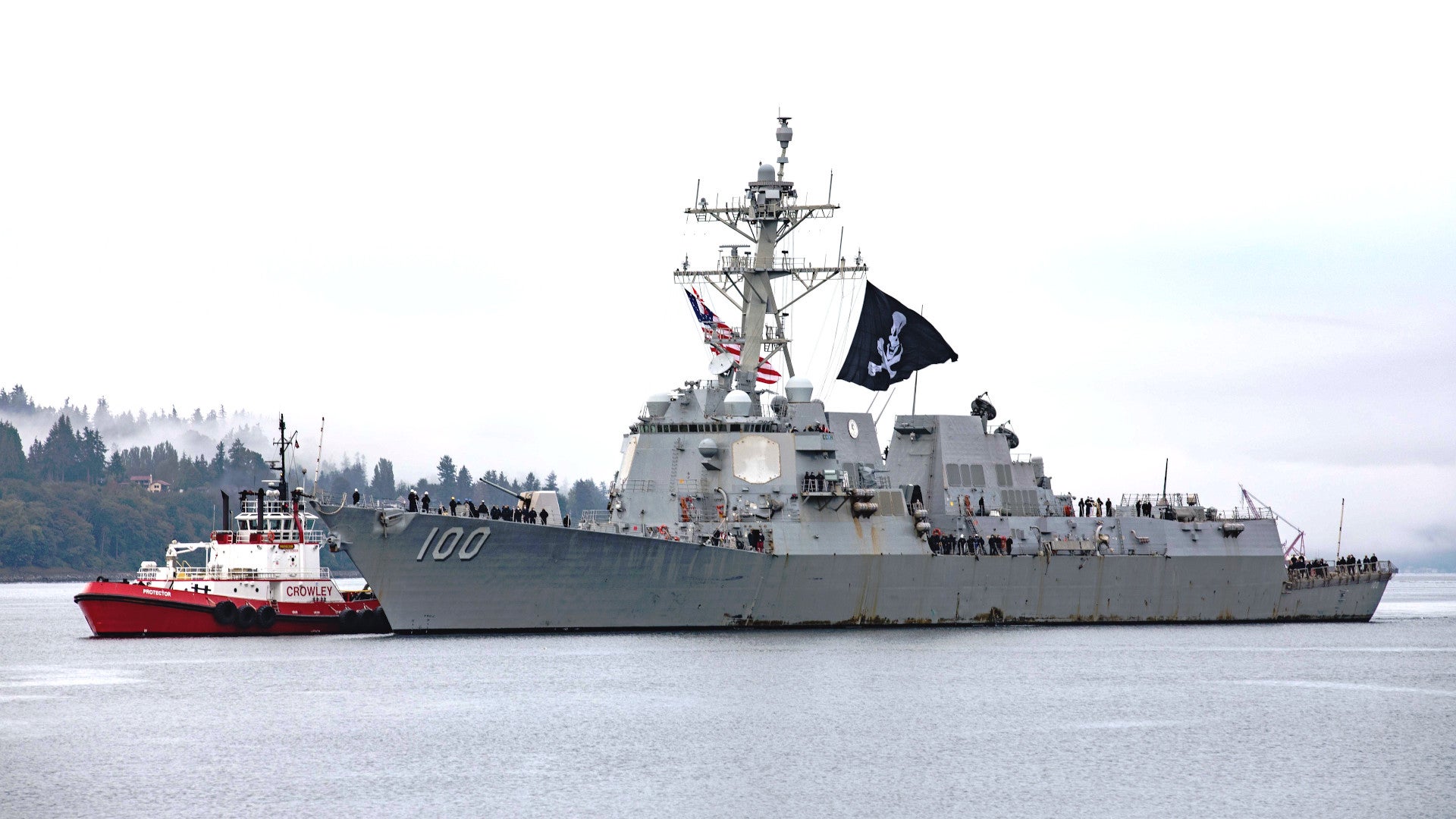The U.S. Navy’s Arleigh Burke class destroyer USS Kidd recently returned from a cruise flying a large black pirate flag with a white skull and crossbones motif, better known as a Jolly Roger. The modern display of this flag, which traces its roots back to the 17th century, on a naval vessel, especially submarines, at the conclusion of a deployment generally reflects some kind of notable achievement. However, this particular ship has its own unique history with the skull and crossbones, which has to do with its namesake, Rear Admiral Isaac Kidd, and Captain William Kidd, a Scottish sailor executed for piracy in 1701.
USS Kidd
returned to Naval Station Everett in Washington State on Sept. 21, 2020, after completing a patrol focused on countering drug smuggling in the Eastern Pacific Ocean and Caribbean. The destroyer had set out for this patrol in April as part of a then-new Enhanced Counter-Narcotics Operations effort led by U.S. Southern Command (SOUTHCOM). For this deployment, the ship also had an MH-60R Seahawk helicopter from Helicopter Maritime Strike Squadron 75 (HSM-75) and a U.S. Coast Guard Law Enforcement Detachment (LEDET) embarked.
“This deployment has been extremely challenging, but Kidd set the standard for operational mission execution and readiness,” Navy Commander Nathan Wemett, the destroyer’s commanding officer, said in a statement. “I thank all the Sailors and U.S. Coast Guardsmen who overcame many obstacles in order to carry out our mission.”
The Navy said that the destroyer had assisted the Coast Guard LEDET in seizing 805 kilograms of cocaine, nearly a ton of drugs, with an estimated value of $30 million during this patrol. The ship had also rendered assistance to a fishing vessel, towing it more than 200 miles to safety.

Kidd also suffered an outbreak of the COVID-19 novel coronavirus among its crew, forcing it to make an unscheduled stop in San Diego at the end of April. The ship’s crew eventually got things under control and the ship headed back out to sea in June to finish its deployment.
The official news item marking the ship’s return to Everett made no mention of the pirate flag or its significance with regards to the USS Kidd. As already noted, the white skull and crossbones on a solid black flag trace back to pirates operating in the Atlantic and Caribbean during the 17th and 18th centuries. Skeletons, the devil, and hourglasses, as well as red accents, such as hearts and drops of blood, were also common. You can read more about the background of these symbols in this past War Zone story.

The broad modern return of these flags on naval vessels, particularly in submarine communities, dates back to World War I, when U.K. Royal Navy submarine crews began flying them after returning from patrols in which they sunk enemy ships. This practice subsequently expanded to reflect a wide array of other achievements at, including successfully completing sea trials or otherwise having a “perfect” deployment. Crews would add additional symbols to their flags to mark the completion of different tasks and missions. You can read more about this in this previous War Zone story.
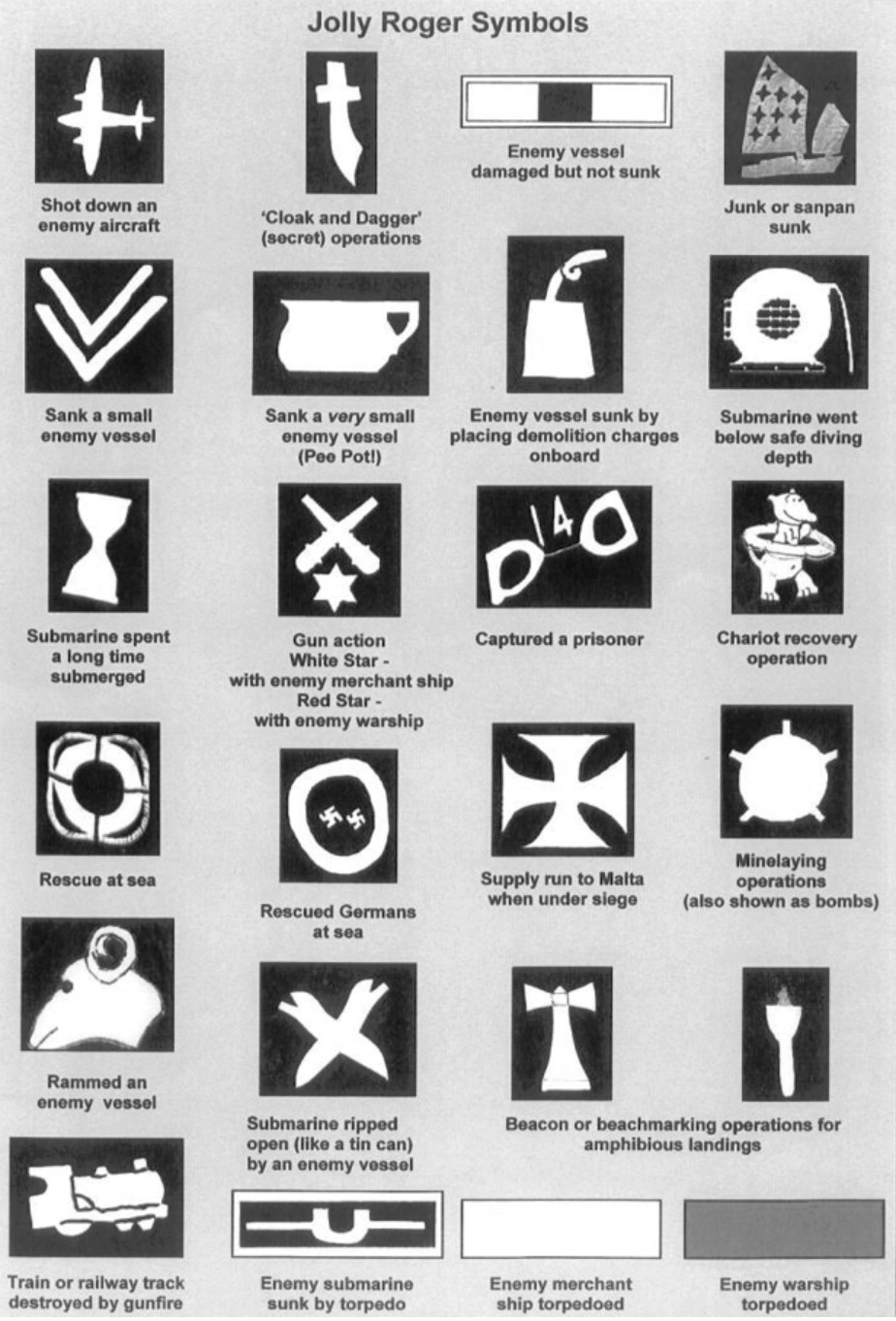
However, the crew of the USS Kidd fly the Jolly Roger for an entirely different reason, which traces its roots to Japan’s infamous surprise attack on Pearl Harbor in Hawaii on Dec. 7, 1941. At that time, Rear Admiral Isaac Kidd, Sr. was Commander of Battleship Division One and the Chief of Staff and Aide to the Commander, Battleship Battle Force.
After the Japanese attack began, he made his way to his flagship, the Pennsylvania class battleship USS Arizona, and took part in the ensuing battle until the ship exploded after bombs hit one of its ammunition magazines. Rear Admiral Kidd was among the 1,177 officers and crew who died on the battleship, which still lies at the bottom of Pearl Harbor and is now a memorial to the events of that day.
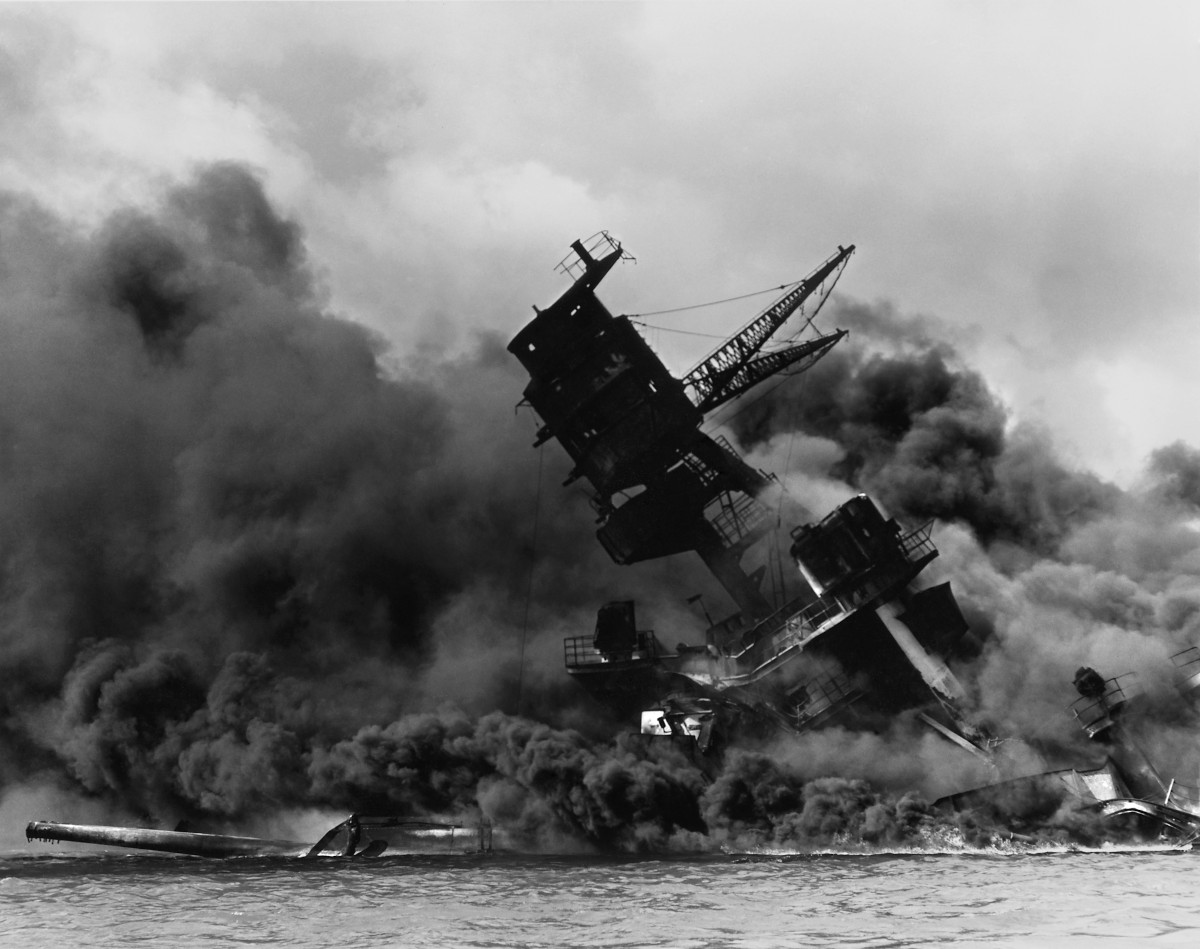
In April 1943, the Navy commissioned a Fletcher class destroyer, also known by its hull number DD 661, named after Rear Admiral Kidd. Even at the time of that ship’s delivery, the crew had already adopted Scottish Captain Kidd as a mascot.
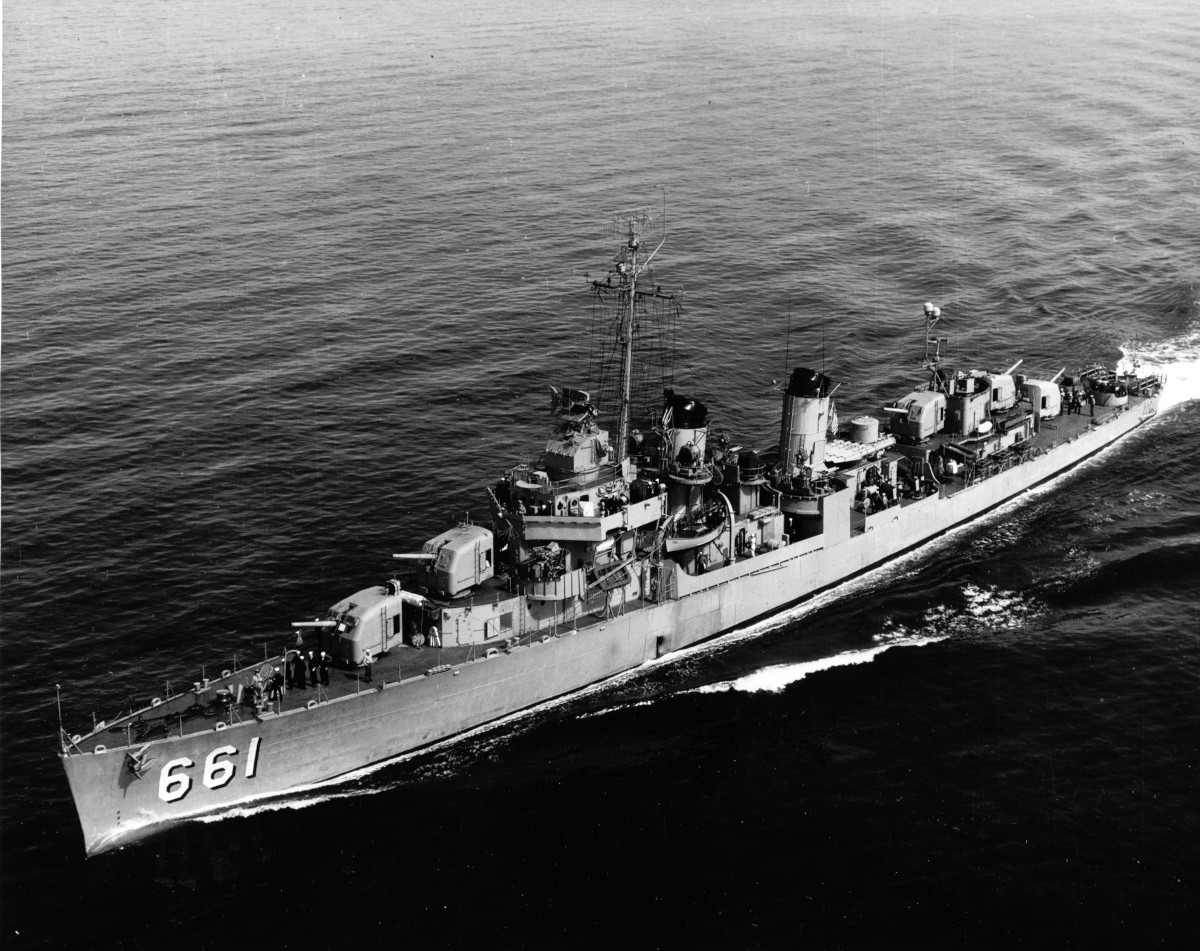
That Kidd is typically referred as a pirate, but also operated at times as a privateer in service of the French Crown and hunted pirates. He was finally arrested in Boston, in what was then the British colony of Massachusetts, in 1699. He was subsequently sent to England, tried, and eventually executed for piracy and murder in 1701. Tales of his purported buried treasure became a thing of legend and served as the inspiration for songs, books, and actual real-life expeditions hoping to find it.

“The crew of the [first] Kidd … had also painted the famed buccaneer’s image high on the forward smokestack,” according to a 2013 edition of the official newsletter of the current USS Kidd. “Not wishing to dishonor the ship’s namesake, however, the crew obtained permission from Mrs. Inez Kidd, widow of RADM Kidd, first.”
As it turned out, Kidd’s nickname at the Naval Academy had been “Cap” in reference to Captain Kidd, as well. With help from Mrs. Kidd, the ship’s crew obtained formal permission to both have the Jolly Roger painted on the smokestack and fly the flag. “Subsequently, the Sailors of DD 661 were known to rescue downed aviators in the Pacific Ocean during World War II and return them to their aircraft carrier, for a hefty ransom of ice cream first of course,” the 2013 newsletter says. They also became known as the Pirates of the Pacific.
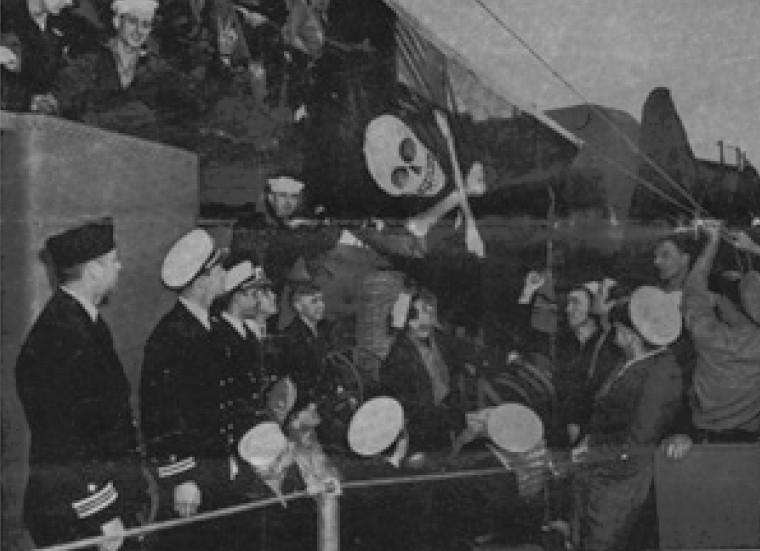
The Navy decommissioned the first USS Kidd in 1946, before returning it to service in 1951 to serve in the Korean War. It remained in service this second time around until 1964 and was finally stricken from the rolls for good in 1974. It is now a museum ship, parked on the Mississippi River in Baton Rouge, Louisiana.
In 1981, the service commissioned a new USS Kidd, the first of four destroyers originally built for Iran, which were never delivered to that country owing to the overthrow of the Shah in 1979. This ship inherited the formal approval to fly the Jolly Roger. In 1998, all four Kidd class destroyers were transferred to Taiwan, where they remain in service as the Kee Lung class.

The Navy then commissioned the current USS Kidd, a Flight IIA Arleigh Burke class destroyer, in 2007. As the latest ship to be named after Rear Admiral Kidd, it now has the official sanction to fly the Jolly Roger.
The appearance of the Jolly Roger on Kidd upon its return home comes after the Pentagon issued a new set of policies for the U.S. military as a whole regarding the display of flags and other symbols in July. There had been concerns that this could prohibit ships’ crews from flying the Jolly Roger, among other flags. It remains unclear exactly how those regulations will get applied, but the case of this particular destroyer makes clear that the Navy has the power to give official sanction to such things.
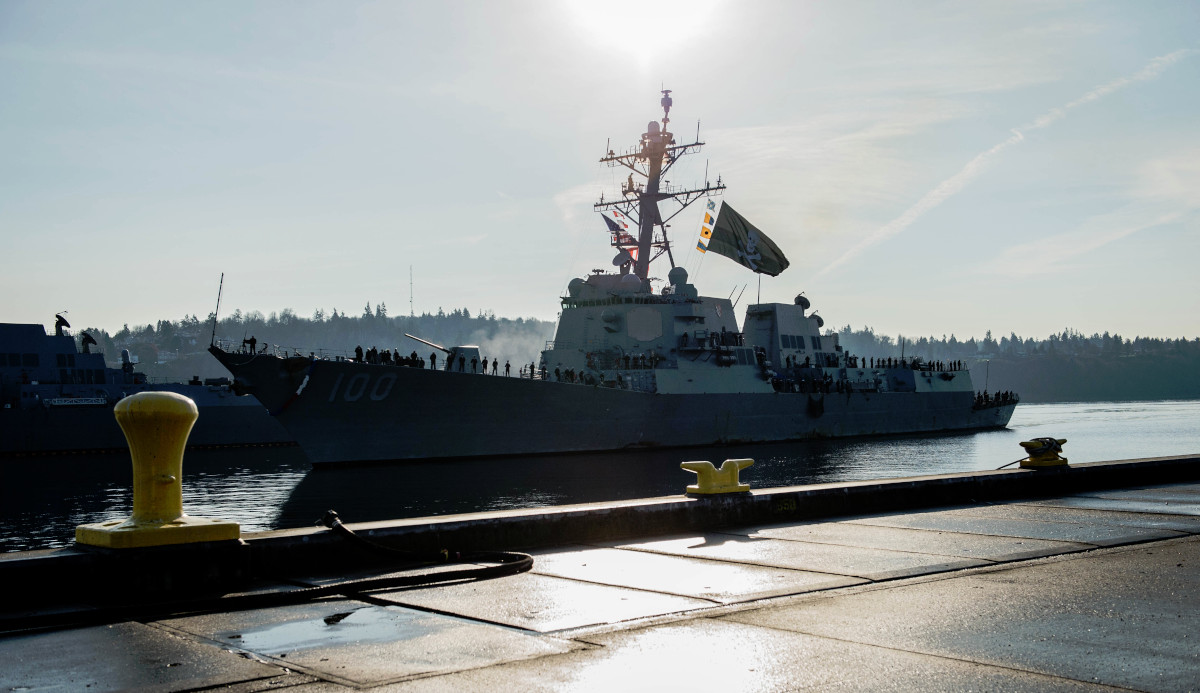
With all this in mind, we want to congratulate the Pirates of the Pacific on successfully completing their most recent patrol.
Contact the author: Joe@thedrive.com
